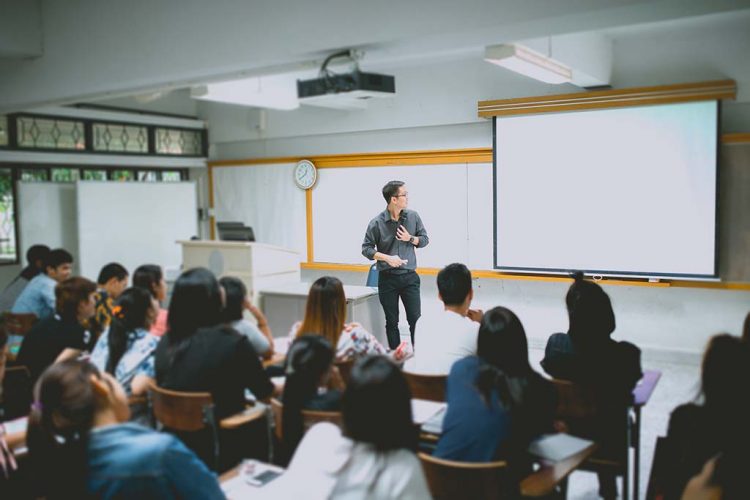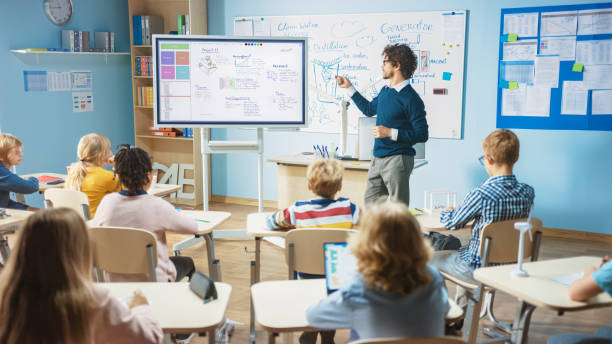Find the Best Primary Science Tuition Singapore for Enhanced Learning
Wiki Article
A Comprehensive Overview to the Numerous Learning Methods in Primary Science Guideline
The expedition of varied knowing approaches in key science direction offers a chance for instructors to enhance student interaction and comprehension considerably. By taking a look at hands-on learning strategies, inquiry-based methods, and joint approaches, we can determine reliable practices that satisfy different discovering designs. In addition, the combination of modern technology and set apart direction plays a crucial function in fostering an inclusive atmosphere. However, the question continues to be: exactly how can these techniques be properly executed in the class to optimize their impact? The response depends on a better examination of each approach and its ramifications for teaching scientific research.
Hands-On Learning Techniques
Hands-on learning methods play a critical duty in main scientific research direction, involving students in energetic expedition and testing. These methods enable learners to engage straight with phenomena and materials, promoting a deeper understanding of clinical principles. By making use of manipulatives, versions, and real-life experiments, teachers create a setting where students can observe, hypothesize, and evaluate their ideas.Such strategies not only boost understanding yet likewise grow vital reasoning and problem-solving skills. When trainees participate in tasks like building simple machines, growing seeds, or carrying out chain reactions, they are motivated to ask concerns and seek solutions via their own monitorings. This experiential strategy aids to demystify intricate scientific concepts, making them more available and relatable.
Furthermore, hands-on learning advertises collaboration amongst peers, as pupils typically work in groups to conduct experiments or share findings. This teamwork not just enriches their knowing experience but likewise establishes necessary social skills. Eventually, integrating hands-on strategies in key science guideline fosters a lifelong love of knowing and curiosity about the environment, laying a strong structure for future scholastic pursuits in science and beyond.
Inquiry-Based Discovering
Inquiry-based understanding is an instructional strategy that encourages students to ask questions, investigate sensations, and construct their very own understanding of scientific concepts. This technique changes the emphasis from conventional teacher-led direction to a more student-centered experience, where learners take the campaign in their academic trip. By cultivating curiosity, inquiry-based understanding advertises deeper interaction with the material, permitting trainees to check out topics in a meaningful context.In technique, this technique usually includes hands-on experiments, monitorings, and important thinking tasks that straighten very closely with the clinical technique. Pupils are motivated to formulate theories, layout examinations, and evaluate information, which cultivates necessary skills such as problem-solving and logical thinking. The duty of the educator in this framework is to assist in expedition, guiding trainees with the query process while encouraging independent idea and collaboration.
Additionally, inquiry-based knowing nurtures a feeling of ownership over the knowing procedure, inspiring students to seek knowledge proactively. This technique not only improves understanding of scientific ideas however likewise fosters a long-lasting love for understanding, outfitting trainees with the abilities necessary to browse a progressively complex globe.
Collaborative Understanding Approaches
Collaborative knowing techniques empower pupils to engage in meaningful communications with peers, promoting a common responsibility for their educational results. In key science instruction, these approaches motivate learners to interact to explore clinical concepts, resolve troubles, and carry out experiments (primary science tuition Singapore). By joining group activities, trainees can utilize varied point of views, allowing for richer understanding and retention of scientific knowledge
One trick aspect of collaborative discovering is the focus on interaction skills. Students need to verbalize their ideas, pay attention proactively to others, and discuss concepts, all of which are critical expertises in both real-world and academic contexts. This social communication not only improves their understanding of scientific concepts but also advertises teamwork and dispute resolution skills.
When trainees see the value of their contributions within a group, they are a lot more likely to take ownership of their understanding trip. On the whole, including collective knowing methods in main science instruction grows a vibrant understanding setting that prepares pupils for future academic and social difficulties.
Innovation Integration in Science
The integration of technology in key scientific research direction boosts finding out experiences by providing ingenious devices and resources that sustain different teaching methodologies, including collective knowing - primary science tuition Singapore. Using electronic systems, simulations, and interactive applications allows students to engage deeply with clinical ideas, helping with an extra hands-on strategy to understandingVirtual laboratories, for circumstances, allow students to conduct experiments securely and effectively, promoting inquiry-based knowing. These devices can simulate real-world clinical situations, enabling students to envision complex procedures that would certainly be tough to reproduce in a standard class setting. Additionally, modern technology fosters interaction and cooperation amongst students, as they can share findings and interact on jobs via on the internet systems.
In addition, multimedia discussions and academic videos can enrich lessons by catering to varied knowing designs, making abstract ideas more available. Data evaluation a knockout post tools likewise equip trainees to collect and interpret scientific data, enhancing vital thinking skills. On the whole, the critical incorporation of innovation in primary science guideline not only boosts interaction however additionally prepares students for a highly innovative society, outfitting them with essential abilities for future clinical undertakings.
Differentiated Instruction Strategies
Separated direction approaches are necessary for resolving the diverse demands of learners in main science education. These techniques enable educators to tailor their mentor methods to accommodate differing abilities, rate of interests, and finding out designs within the classroom. By using distinguished instruction, instructors can develop an inclusive atmosphere that fosters interaction and enhances understanding of clinical concepts.One reliable approach is to use versatile grouping, which enables pupils to work together with peers at comparable ability degrees or with varying viewpoints. This method encourages peer learning and advertises important thinking. Furthermore, using options in projects can encourage trainees, enabling them to choose jobs that resonate with their interests while still fulfilling curricular objectives.
Moreover, integrating tiered assignments is an additional useful method. By developing jobs with differing levels of intricacy, instructors can make certain that all trainees are suitably tested, no matter of their efficiency. Utilizing developmental analyses to assess understanding further makes it possible for educators to change their educational click to find out more approaches dynamically, making certain that each student receives the support they need.
Eventually, applying separated guideline techniques in primary science education not only improves pupil understanding outcomes but additionally cultivates an interest for scientific research, preparing pupils for future academic quests.

Conclusion
In summary, reliable main scientific research direction necessitates a complex method that encompasses hands-on knowing, inquiry-based techniques, and collective methods. The assimilation of modern get more technology and distinguished guideline further satisfies varied understanding styles, cultivating a setting for expedition and essential reasoning. By implementing these techniques, educators can enhance pupil engagement and comprehension, ultimately nurturing a long-lasting interest for scientific research and inquiry. Such detailed methods are vital for establishing educated and interested future researchers.The exploration of varied discovering methods in key scientific research guideline presents an opportunity for instructors to enhance trainee interaction and understanding dramatically.Hands-on understanding strategies play a pivotal role in primary scientific research direction, engaging students in energetic exploration and trial and error.Inquiry-based understanding is a training strategy that urges students to ask concerns, examine phenomena, and build their own understanding of clinical ideas.Joint understanding techniques empower trainees to engage in purposeful communications with peers, promoting a shared duty for their academic results. Generally, including joint learning techniques in primary scientific research direction cultivates a dynamic understanding atmosphere that prepares trainees for future scholastic and social challenges.
Report this wiki page